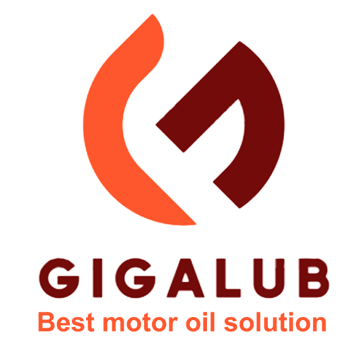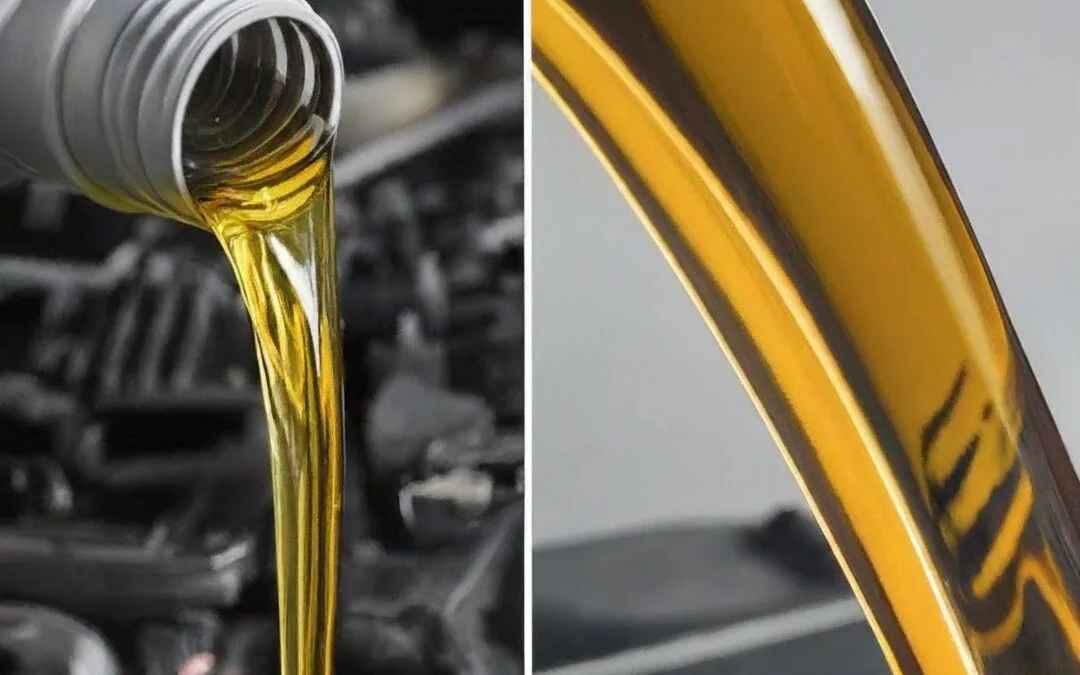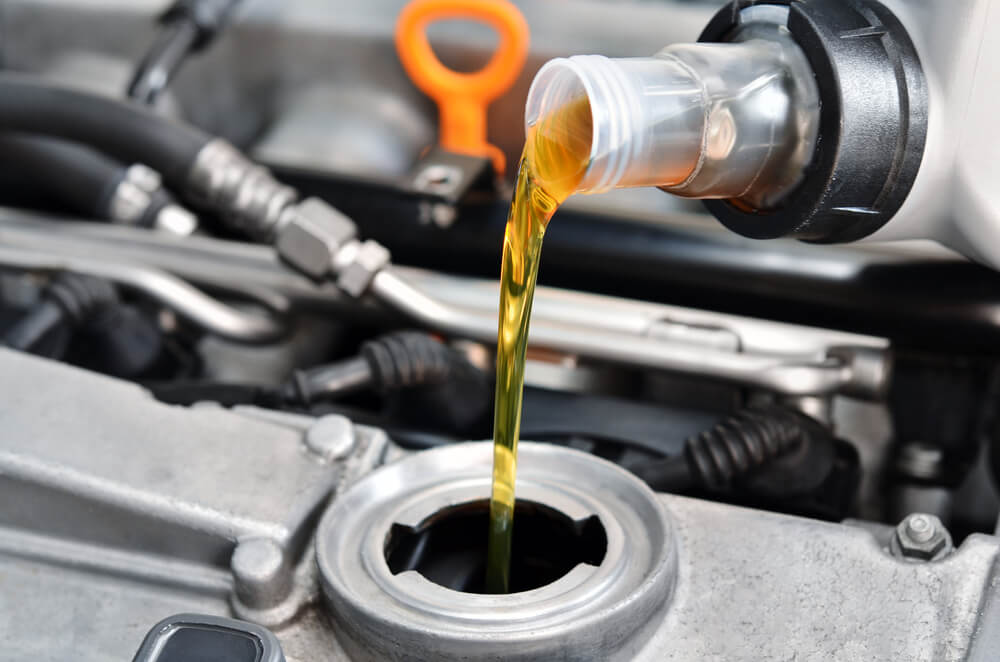Title: Demystifying the Journey: Where Does Motor Oil Go?
Introduction
In the intricate ecosystem of automotive engineering, few substances play a more vital role than motor oil. As drivers, we’re well aware of its necessity, but have you ever paused to ponder the fascinating journey about where does the motor oil go within the confines of your vehicle’s engine? The path of motor oil is a labyrinthine narrative, intricately woven through the heart of the machine, silently ensuring its smooth operation. Join us as we embark on a journey to demystify the enigmatic route of motor oil, uncovering its destinations, interactions, and impact along the way. From the first drop to its eventual departure, let’s delve into the depths of automotive anatomy and explore the intriguing question: Where does motor oil go?
The role of motor oil
Beyond mere lubrication, its functions are as diverse as they are crucial. Let’s delve into the multifaceted role of motor oil:
1. Lubrication:
- At its core, motor oil serves as a lubricant, reducing friction between moving parts within the engine. As metal components interact under intense heat and pressure, the oil forms a protective barrier, preventing wear and tear while ensuring smooth operation.
2. Heat Dissipation:
- Engines operate at extreme temperatures, and motor oil acts as a coolant, absorbing and dissipating heat generated during combustion. By carrying away excess heat, it prevents overheating and maintains optimal operating conditions for engine components.
3. Cleaning and Protection:
- Motor oil functions as a cleansing agent, sweeping away debris, dirt, and contaminants that accumulate within the engine. Additionally, it forms a protective film over metal surfaces, shielding them from corrosion and oxidation, thus extending the engine’s lifespan.
4. Sealant Maintenance:
- Engine seals and gaskets play a crucial role in preventing oil leaks and maintaining compression. Motor oil helps keep these seals supple and functional, reducing the risk of leaks and ensuring proper engine performance.
5. Enhanced Efficiency:
- Proper lubrication with high-quality motor oil reduces frictional losses within the engine, leading to improved fuel efficiency. By minimizing energy wasted on overcoming friction, motor oil contributes to smoother operation and optimized fuel consumption.
6. Component Cooling and Protection:
- Beyond lubricating moving parts, motor oil also coats critical engine components such as pistons, camshafts, and crankshafts. This coating not only reduces friction but also aids in dissipating heat, ensuring these components remain within their optimal temperature range for peak performance.
In essence, motor oil is far more than a mere lubricant; it’s a guardian, a healer, and a performance enhancer for your engine. By understanding and appreciating its multifaceted role, you empower yourself to make informed decisions regarding oil selection, maintenance practices, and overall vehicle care. Remember, the quality and condition of your motor oil can significantly impact your engine’s health and longevity, making it a worthwhile investment in the heart of your vehicle.
Description of how motor oil moves through the engine
Motor oil is not merely static within your engine; it’s a dynamic force, continuously circulating to safeguard and optimize engine performance. Understanding the intricate journey of motor oil through the engine is key to appreciating its vital role. Let’s dive into the mechanics of this fluid ballet:
1. Oil Pump Action:
- The journey begins with the oil pump, located at the base of the engine. As the engine cranks, the oil pump springs into action, drawing oil from the oil pan and pressurizing it for distribution throughout the engine.
2. Main Galleries and Passageways:
- From the pump, pressurized oil travels through main galleries or channels within the engine block. These passages act as conduits, directing oil to various critical components, including the crankshaft, camshaft, and valvetrain.
3. Bearings and Lubrication Points:
- At crucial junctures, such as bearings supporting the crankshaft and camshaft, oil is delivered to provide lubrication. This lubrication forms a protective layer, reducing friction and wear between metal surfaces, thus prolonging component lifespan.
4. Piston Cooling and Lubrication:
- As oil circulates through the engine, it also reaches the pistons and piston rings. This serves a dual purpose: lubricating the piston rings to reduce friction and cooling the pistons by absorbing heat generated during combustion.
5. Valve Mechanisms:
- The valvetrain, comprising valves, lifters, and camshafts, relies on a steady supply of oil for lubrication. Oil is directed to these components through specialized passages, ensuring smooth operation and minimizing wear.
6. Return to the Oil Pan:
- After completing its circuit through the engine, oil returns to the oil pan, where it awaits the next cycle. This reservoir acts as a storage vessel, replenishing oil levels and allowing for efficient circulation during subsequent engine operation.
7. Filtration and Purification:
- Throughout its journey, oil encounters contaminants and debris. To maintain its effectiveness, oil passes through a filtration system, typically comprising an oil filter. This removes impurities, ensuring clean oil circulates through the engine, thereby preserving its health and performance
Unlocking the Heartbeat: The Crucial Role of the Oil Pump in Circulating Oil
At the core of your engine’s vitality lies a silent yet indispensable performer: the oil pump. This unsung hero orchestrates the rhythmic circulation of motor oil, ensuring every vital component receives the nourishment it needs to function optimally. Let’s unveil the pivotal role of the oil pump in this intricate dance:
1. Prime Mover:
- The oil pump serves as the engine’s lifeline, responsible for initiating and sustaining the flow of motor oil throughout its various pathways. Positioned within the oil pan or attached to the engine block, the pump is strategically located to draw oil from the reservoir and propel it into action.
2. Pressurization:
- As the engine springs to life, so does the oil pump. Driven by the rotation of the engine’s crankshaft or through a dedicated driveshaft, the pump swiftly transforms mechanical energy into hydraulic pressure. This pressure buildup primes the oil for distribution, ensuring it can overcome resistance and reach every nook and cranny of the engine.
3. Efficient Distribution:
- With pressure building, the oil pump channels the pressurized oil through a network of passages and galleries within the engine block. These conduits act as arterial highways, guiding the oil to critical components such as bearings, camshafts, and pistons with precision and efficiency.
4. Maintaining Flow Rate:
- The oil pump isn’t just a brute force machine; it’s a master regulator, finely tuned to maintain optimal oil flow rates under varying engine conditions. Whether idling at a traffic light or roaring down the highway, the pump adjusts its output to meet the engine’s lubrication demands, ensuring consistent performance across the RPM spectrum.
5. Overcoming Resistance:
- Within the engine, oil encounters resistance as it navigates through narrow passages and interacts with moving components. The oil pump’s robust design and high-pressure output empower it to overcome this resistance, ensuring a steady supply of oil reaches even the most remote corners of the engine.
6. Preserving Vitality:
- Beyond mere circulation, the oil pump plays a crucial role in preserving engine vitality. By maintaining proper lubrication, it minimizes friction, reduces wear and tear, and dissipates heat, thus safeguarding critical components from premature failure and ensuring long-term reliability.
7. Collaborative Effort: The oil pump doesn’t work alone; it’s part of a cohesive ecosystem of engine components working in harmony to keep things running smoothly. From the crankshaft and bearings to the oil filter and pressure relief valve, each element plays a role in the oil circulation process, underscoring the importance of a well-coordinated system
Engine Components and Oil Interaction: Nurturing the Heart of Performance
Within the intricate labyrinth of your engine, a delicate dance unfolds between metal and fluid, each movement crucial to the engine’s vitality. Understanding how motor oil interacts with various engine components unveils the secrets behind its role as the lifeblood of your vehicle. Let’s explore this symbiotic relationship:
1. Bearings:
- Bearings serve as pivotal support structures within the engine, facilitating smooth rotation of the crankshaft and camshafts. Motor oil forms a protective cushion between these metal surfaces, reducing friction and preventing metal-to-metal contact. This lubricating film, maintained by the continuous flow of oil, ensures bearings operate with minimal wear and tear.
2. Piston Assembly:
- Pistons endure intense heat and pressure within the combustion chamber. Motor oil plays a dual role here, lubricating the piston rings to reduce friction against the cylinder walls and dissipating heat generated during combustion. This lubrication and cooling effect help preserve piston integrity and maintain optimal performance.
3. Camshaft and Valvetrain:
- The camshaft and valvetrain orchestrate the precise timing of valve opening and closing, essential for efficient engine operation. Motor oil lubricates these components, ensuring smooth movement and minimizing wear on cam lobes, lifters, and valve stems. Proper lubrication is critical to maintaining valve timing accuracy and preventing premature component failure.
4. Timing Chain/Belt:
- Timing chains or belts synchronize the rotation of the crankshaft and camshaft, ensuring precise valve timing. Motor oil lubricates these components, reducing friction and minimizing wear on chain links, sprockets, and tensioners. Proper lubrication is essential for preserving timing system integrity and preventing catastrophic engine damage.
5. Cylinder Walls and Pistons:
- Motor oil forms a thin film between the piston rings and cylinder walls, reducing friction and facilitating smooth piston movement. This lubrication minimizes wear on both the piston rings and cylinder walls, ensuring optimal compression, efficient combustion, and prolonged engine lifespan.
6. Cooling System:
- Motor oil also plays a role in engine cooling by absorbing and dissipating heat generated during operation. As oil flows through the engine, it carries heat away from critical components, helping to maintain optimal operating temperatures and prevent overheating.
7. Turbochargers and Superchargers:
- Turbochargers and superchargers increase engine power by compressing intake air. Motor oil lubricates the bearings and rotating components of these forced induction systems, ensuring smooth operation and preventing premature wear.
Inside the Engine: How Oil Containment Works
In the intricate machinery of an engine, the containment of oil is not merely a passive process but a dynamic system crucial for its smooth operation. Let’s delve into the mechanisms that keep oil where it belongs within the engine and ensure optimal performance.
1. Sealed Compartments: Within the engine, oil is contained within sealed compartments such as the oil pan, valve covers, and oil galleries. These compartments are designed to withstand the pressure and temperature variations encountered during engine operation, preventing leaks and spills.
2. Gaskets and Seals: Critical to oil containment are gaskets and seals strategically placed throughout the engine. Made from durable materials like rubber or silicone, these components create barriers between moving parts, ensuring that oil remains confined within its designated areas.
3. Precision Machining: The internal surfaces of the engine block and cylinder head undergo precise machining to create smooth mating surfaces. This meticulous engineering minimizes gaps and imperfections, reducing the likelihood of oil leakage and promoting efficient oil containment.
4. Oil Pump and Circulation System: The oil pump plays a central role in maintaining oil containment by circulating oil throughout the engine. As the pump draws oil from the sump, it pressurizes and distributes it to critical components such as bearings, camshafts, and pistons, ensuring proper lubrication and cooling.
5. Gravity and Slope: Engine components are strategically positioned to take advantage of gravity and slope, aiding in oil containment. For instance, the oil pan is situated at the lowest point in the engine to collect and store oil, while inclined surfaces facilitate drainage and return of oil to the sump.
6. Baffles and Windage Trays: Inside the oil pan, baffles and windage trays are employed to control oil movement and prevent sloshing during acceleration, deceleration, and cornering. These features help maintain consistent oil pressure and prevent aeration, ensuring effective lubrication under various operating conditions.
7. Maintenance and Inspection: Regular maintenance and inspection are essential for ensuring effective oil containment. Inspecting gaskets, seals, and components for signs of wear or damage allows for timely replacement, preventing potential leaks and preserving engine integrity.
Decoding Oil Consumption: A Comprehensive Guide
Oil consumption in an engine is not a one-size-fits-all scenario; it’s a nuanced aspect that varies depending on factors like engine design, driving habits, and maintenance practices. Let’s unravel the complexities of oil consumption to help you understand how much oil your engine might use and when to take action.
1. Engine Design and Type: The design and type of engine significantly influence oil consumption. Older engines, particularly those with high mileage, may experience increased oil consumption due to wear and tear on internal components such as piston rings and valve seals. Conversely, modern engines with tighter tolerances and advanced materials typically exhibit lower oil consumption rates.
2. Driving Conditions and Habits: How and where you drive can affect oil consumption. Stop-and-go city driving or frequent high-speed highway trips may lead to higher oil consumption compared to steady-state cruising. Aggressive driving behaviors, such as rapid acceleration and heavy braking, can also contribute to increased oil consumption by placing additional stress on engine components.
3. Oil Viscosity and Quality: Using the correct viscosity and high-quality oil recommended by the manufacturer is paramount. Choosing the wrong viscosity or using low-quality oil can lead to increased friction, heat, and oil consumption. Regularly checking and maintaining the oil level according to the manufacturer’s specifications is crucial for optimal engine performance and longevity.
4. External Leaks: External oil leaks can result in noticeable oil consumption. Common sources of leaks include damaged gaskets, seals, or oil pan drain plugs. Inspecting the engine and surrounding components for signs of oil leaks, such as puddles or oil residue, can help identify and address potential issues promptly.
5. Internal Engine Issues: Internal engine issues, such as worn piston rings, valve stem seals, or PCV (Positive Crankcase Ventilation) system malfunctions, can contribute to increased oil consumption. These issues may manifest as blue smoke from the exhaust, fouled spark plugs, or a noticeable decrease in oil level between oil changes.
6. Monitoring and Maintenance: Regularly monitoring oil consumption and performing routine maintenance are essential practices for preserving engine health. Keeping track of oil levels and conducting oil changes at the recommended intervals help prevent excessive oil consumption and maintain proper lubrication.
7. When to Take Action: While some oil consumption is normal, significant or sudden increases in oil consumption warrant attention. If you notice persistent low oil levels, excessive smoke from the exhaust, or other signs of potential engine issues, it’s advisable to consult a qualified mechanic for diagnosis and repair.
Navigating Oil Consumption: A Comprehensive Overview
Oil consumption is a critical aspect of engine health, influencing performance, longevity, and overall efficiency. Delving into the intricacies of oil consumption unveils a multifaceted interplay of factors that impact how much oil an engine uses over time. Let’s explore this essential aspect of automotive maintenance in detail.
1. Normal vs. Excessive Consumption: Understanding the distinction between normal and excessive oil consumption is crucial. While all engines consume some amount of oil during operation due to factors like lubrication and combustion, excessive consumption may indicate underlying issues such as leaks, worn components, or improper maintenance.
2. Factors Influencing Oil Consumption: Several factors contribute to oil consumption, including:
- Engine Type and Age: Older engines or those with high mileage may exhibit higher oil consumption rates due to wear on internal components.
- Driving Habits: Aggressive driving, frequent stop-and-go traffic, or extended periods of high-speed driving can increase oil consumption.
- Oil Quality and Viscosity: Using the recommended oil viscosity and quality specified by the manufacturer is essential for optimal engine performance and minimizing oil consumption.
- Environmental Conditions: Extreme temperatures, altitude changes, and dusty or polluted environments can affect oil viscosity and consumption rates.
3. Monitoring Oil Levels: Regularly checking and monitoring oil levels is critical for detecting changes in consumption patterns. This can be done using the engine’s dipstick or onboard oil level monitoring systems, if available. Consistently low oil levels may indicate a need for investigation and potential maintenance or repairs.
4. Identifying Signs of Excessive Consumption: Certain symptoms may signal excessive oil consumption, including:
- Visible Oil Leaks: External leaks from gaskets, seals, or damaged components can lead to noticeable oil loss.
- Exhaust Smoke: Blue or gray smoke from the exhaust may indicate oil being burned within the engine, potentially due to worn piston rings or valve seals.
- Decreased Performance: Engine performance may suffer if oil levels drop significantly, leading to increased friction and wear on internal components.
5. Addressing Excessive Consumption: If excessive oil consumption is suspected, prompt action is necessary to prevent further damage to the engine. This may involve:
- Conducting a thorough inspection for oil leaks and worn components.
- Performing a compression test or leak-down test to assess the condition of internal engine components.
- Consulting a qualified mechanic or automotive technician for diagnosis and necessary repairs.
6. Maintenance Practices to Minimize Consumption: Implementing proper maintenance practices can help minimize oil consumption and prolong engine life. This includes:
- Adhering to recommended oil change intervals and using the correct oil viscosity and quality.
- Checking and replacing worn gaskets, seals, and other components as needed.
- Addressing any engine performance issues promptly to prevent excessive wear and oil consumption.
Mitigating Environmental Impact: Responsible Oil Disposal Practices
Oil, a vital component for engines, poses significant environmental risks if not disposed of properly. Understanding the environmental impact of oil and adopting responsible disposal practices are crucial steps towards preserving our planet’s health and sustainability. Let’s explore these issues in detail.
1. Environmental Impact of Improper Oil Disposal: Improper disposal of used oil can lead to severe environmental consequences, including:
- Water Contamination: Oil runoff from improperly disposed containers or spills can contaminate water sources, affecting aquatic ecosystems and posing risks to human health.
- Soil Pollution: Leaked or dumped oil can seep into the soil, impairing its fertility and disrupting plant growth. This contamination may persist for years, causing long-term damage to ecosystems.
- Air Pollution: Improperly burned oil, such as in open fires or uncontrolled incineration, releases harmful pollutants and greenhouse gases into the atmosphere, contributing to air quality degradation and climate change.
2. Responsible Oil Disposal Practices: Adopting responsible oil disposal practices is essential for mitigating environmental impact. Here’s how individuals and businesses can contribute:
- Recycling: Utilize designated recycling centers or collection points to dispose of used oil. Many automotive retailers, service stations, and recycling facilities accept used oil for proper recycling and disposal.
- Reuse: Consider opportunities for reusing or repurposing used oil where appropriate. Recycled oil can be processed into various products, including lubricants, asphalt, and even electricity.
- Proper Containment: Store used oil in leak-proof containers to prevent spills and leaks. Seal containers tightly and avoid mixing used oil with other substances, such as antifreeze or solvents, which can complicate recycling efforts.
- Professional Disposal: Businesses and industries that generate large quantities of used oil should enlist the services of certified waste management companies for proper disposal. These companies adhere to strict regulations and employ environmentally sound disposal methods.
- Education and Outreach: Educate communities and individuals about the importance of responsible oil disposal through outreach programs, public awareness campaigns, and educational initiatives. Empowering people with knowledge fosters a culture of environmental stewardship and accountability.
3. Government Regulations and Enforcement: Governments play a crucial role in regulating oil disposal practices through legislation, regulations, and enforcement mechanisms. These measures aim to ensure compliance with environmental standards, promote sustainable waste management practices, and hold violators accountable for environmental damage.
4. Advancements in Recycling and Treatment Technologies: Ongoing research and development efforts continue to advance recycling and treatment technologies for used oil. Innovations such as re-refining processes and chemical treatments enable more efficient recovery of valuable components from used oil while minimizing environmental impact.
Conclusion: Preserving the Path of Motor Oil
From its inception in engine lubrication to its eventual retirement, understanding where motor oil goes underscores the need for conscientious stewardship. By embracing recycling initiatives, adhering to proper containment practices, and supporting regulatory measures, we safeguard against environmental harm while paving the way for a cleaner, healthier future. Let’s ensure that the path of motor oil leads not to pollution but to preservation, preserving our planet one drop at a time.
Useful link
https://columbiatireauto.com/how-oil-works-in-your-cars-engine/
FAQs about Where Motor Oil Goes:
. Where does motor oil go once it’s poured into a car’s engine?
- Motor oil circulates through various components of the engine, such as the crankshaft, pistons, and valves, providing lubrication and reducing friction.
2. How often should I check my motor oil levels?
- It’s advisable to check your motor oil levels regularly, preferably once a month or as recommended in your vehicle’s owner’s manual.
3. What happens if I don’t change my motor oil regularly?
- If motor oil is not changed regularly, it can become contaminated with dirt and debris, lose its lubricating properties, and potentially cause damage to the engine due to increased friction and heat.
4. Can I dispose of motor oil by pouring it down the drain?
- No, pouring motor oil down the drain is harmful to the environment. Used motor oil should be properly disposed of at recycling centers or designated drop-off locations.
5. How can I tell if my car is leaking motor oil?
- Signs of a motor oil leak include oil spots or puddles under the vehicle, a burning oil smell, or a noticeable decrease in oil levels between oil changes.
6. What should I do if I notice a motor oil leak?
- If you suspect a motor oil leak, it’s essential to have it inspected and repaired by a qualified mechanic to prevent potential damage to the engine.
7. Can I mix different brands or weights of motor oil?
- It’s generally not recommended to mix different brands or weights of motor oil, as it can affect performance and may not provide optimal lubrication for your engine.
8. How do I know which type of motor oil is suitable for my car?
- Refer to your vehicle’s owner’s manual for recommendations on the type and viscosity of motor oil best suited for your engine.
9. What’s the purpose of the oil filter in relation to motor oil?
- The oil filter helps remove contaminants and impurities from the motor oil as it circulates through the engine, ensuring cleaner oil reaches critical engine components.
10. Is it normal for my car to consume some motor oil between oil changes?
- Some oil consumption between oil changes is normal for many vehicles. However, excessive oil consumption may indicate an underlying issue that should be addressed by a mechanic.





Leave a Reply